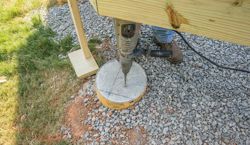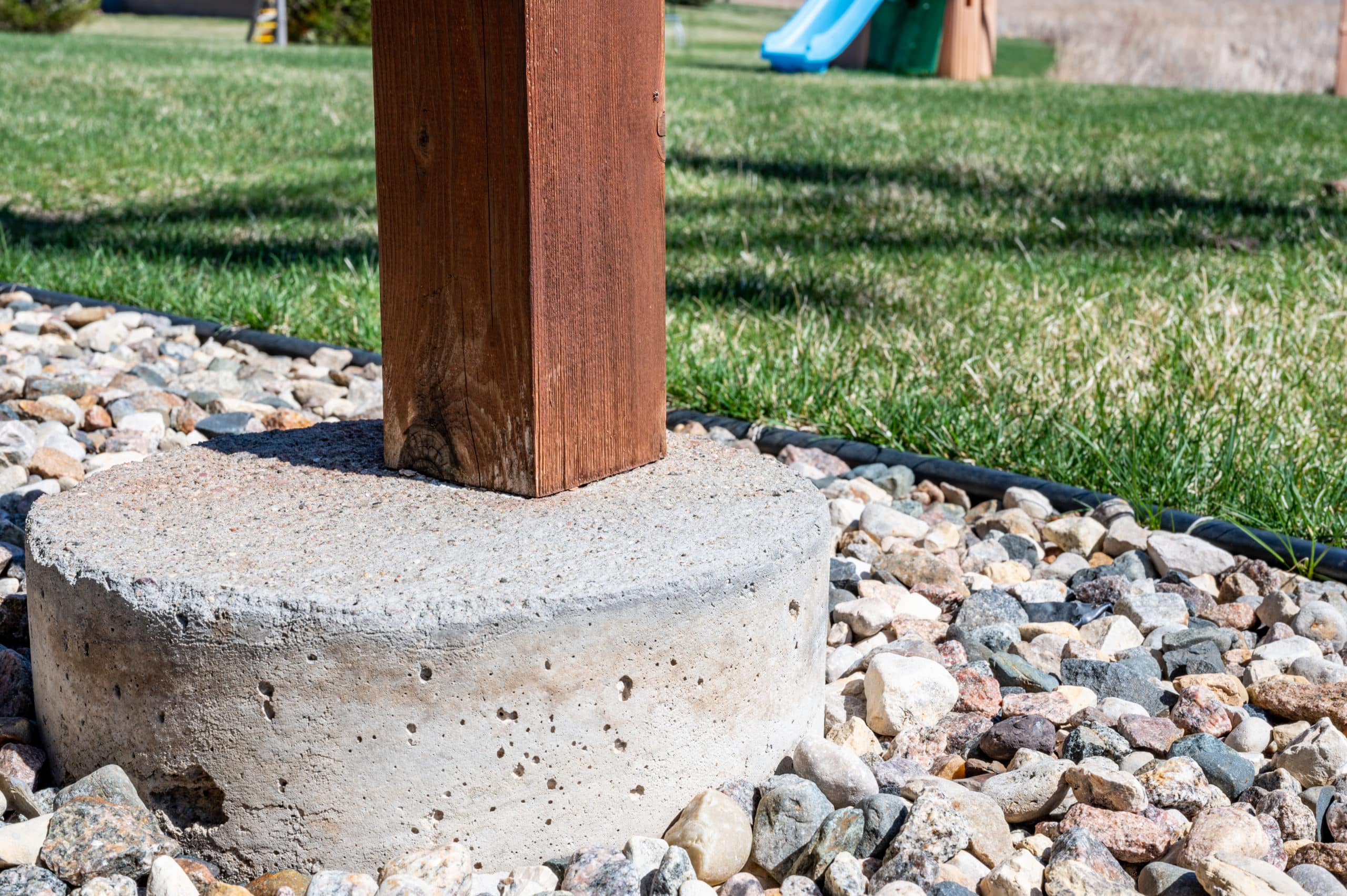A Solid Structure for Your Oasis: Exploring the Importance of Deck Footings in Outdoor Frameworks
A Solid Structure for Your Oasis: Exploring the Importance of Deck Footings in Outdoor Frameworks
Blog Article
Make The Most Of the Life-span of Your Deck With Strong and reliable Grounds
As homeowners, we invest a significant quantity of time and sources right into developing the ideal outdoor space. A deck is commonly the focal point of that area, giving a place to kick back, amuse, and delight in the appeal of nature. In order to completely make the most of the life expectancy of your deck, it is critical to guarantee that it is built on strong and reliable grounds. These footings create the foundation of your deck, providing security and assistance, and are typically the difference between a deck that lasts for decades and one that requires constant repair services. In this conversation, we will explore the significance of dependable grounds, the different kinds of strong footing products, proper installation methods, and exactly how to preserve and inspect your deck's grounds to avoid damages. Whether you are in the procedure of looking or constructing a brand-new deck to improve the longevity of your existing one, join us as we uncover the secrets to a deck that stands the examination of time.
Relevance of Trustworthy Footings
When it comes to taking full advantage of the lifespan of your deck,The relevance of trusted footings can not be overemphasized. The grounds offer as the structure whereupon the entire structure rests, offering stability and support. Without a solid ground, the deck is vulnerable to changing, sinking, and also collapse, which can substantially lower its lifespan and pose security threats.

Picking the appropriate sort of footing is likewise vital. One of the most common kinds consist of concrete grounds, helical piers, and sonotubes. Elements such as dirt problems, climate, and the dimension of the deck will determine the most ideal option. Employing an expert to evaluate the soil, design the footings, and make sure proper installation is very suggested.
Buying dependable footings might entail added expense and effort upfront, however it is a rewarding investment that will certainly add to the long-lasting sturdiness and safety and security of your deck. By ensuring a solid structure, you can enjoy your deck for lots of years to come, knowing that it is constructed to endure the test of time.
Types of Solid Footing Products
To make certain the stability and durability of your deck, it is essential to take into consideration the numerous kinds of strong footing materials available. The option of footing product is vital as it supplies the necessary assistance and security to hold up against the weight and tons of the deck structure.
One usual and trusted product made use of for deck grounds is concrete. Concrete grounds are resilient and provide excellent stability. They can be put directly into the ground or utilize precast concrete footings for less complicated installment. Another choice is helical piers, which are steel shafts with helical plates that are screwed into the ground. These piers use outstanding load-bearing ability and can be made use of in different soil problems.
For areas with bad soil conditions, such as large or loose soils, a footing system that uses steel or composite piers might be liked. Deck Footings. These piers are driven deep into the ground to reach steady soil layers, making certain the stability of the deck
Sometimes, deck footings can also be created making use of cured lumber. It is vital to guarantee that the lumber is effectively treated to resist rot and degeneration caused by direct exposure to wetness and insects.
When selecting a ground material for your deck, it is critical to consider variables such as soil conditions, environment, and neighborhood building regulations. Consulting with a professional service provider or architectural engineer can aid identify the most suitable footing material for your details deck job.
Correct Setup Strategies for Grounds
Considering the importance of guaranteeing security and toughness for your deck, it is important to understand the correct setup methods for footings. The success of your deck task relies greatly on the integrity of its foundation, which is why following the correct setup methods is vital.
Primarily, it is essential to determine the suitable size and deepness of the footings based upon the style and lots demands of your deck. This details can be obtained from building codes or through consultation with a structural designer. As a basic rule, footings must go to least 12 inches in diameter and extend below the frost line to avoid moving or resolving.
Once the dimensions are established, the following action is excavation. Digging the openings for the grounds ought to be finished with accuracy, making sure they are deep sufficient and have a level bottom. Deck Footings. This will provide a stable base for the grounds
To further improve the security of the footings, it is suggested to utilize a concrete blend with a strength of at the very least 3,000 psi. This will make certain the grounds can endure the weight and forces applied by the deck.
During installation, it is necessary to maintain the grounds degree and straightened effectively. This can be achieved by pop over here utilizing a level and string lines to assist the positioning of each ground.
Keeping and Examining Your Deck's Grounds
Regular maintenance and thorough examinations are necessary for making sure the lasting security and security of your deck's footings. With time, grounds can succumb to tear and wear, climate condition, and soil activity, which can endanger their structural stability. To maximize the lifespan of your deck's footings, it is important to implement a regular upkeep routine and conduct complete assessments.

Furthermore, it is essential to evaluate footings for any indicators of damage or deterioration. This includes checking for cracks, splits, or crumbling concrete, along with any kind of indicators of activity or negotiation. Any kind of problems must be dealt with promptly to stop further damage and ensure the stability of the deck.
Furthermore, it is suggested to check the surrounding soil for any type of indications of erosion or changing. Dirt activity can influence check it out the stability of the footings, so it is essential to attend to any type of soil-related issues promptly.
Signs of Footing Damage and Exactly How to Address Them
Footing damage can present major risks to the security and safety of your deck, making it important to without delay recognize and deal with any kind of indications of wear and tear. One of one of the most common signs of footing damage is settling or sinking of the deck. This can take place because of dirt erosion, inadequate grounds, or bad building methods. It is critical to take prompt activity to prevent more damages if you notice that your deck is unequal or leaning. Another indicator of footing damages is crumbling or cracking of the concrete grounds. This can be triggered by freeze-thaw cycles, too much dampness, or low quality concrete. If you observe any type of fractures or degeneration in the footings, it is necessary to have them examined and repaired by a professional. Additionally, if you discover any activity or changing of the deck, such as a deck that feels unsteady when strolled on or wobbles when weight is used, it can be an indicator of footing damage. In such situations, it is recommended to talk to a structural engineer or an expert contractor to analyze the extent of the damage and establish the ideal strategy. official site Bear in mind, addressing ground damage quickly can help guarantee the long-term security and security of your deck.
Conclusion
In conclusion, guaranteeing the reliability and strength of grounds is crucial for optimizing the life-span of your deck. By utilizing solid footing products and appropriately installing them, you can protect against damage and preserve the stability of your deck.
These footings create the foundation of your deck, providing security and support, and are frequently the difference in between a deck that lasts for decades and one that calls for consistent repair work. In this conversation, we will certainly discover the significance of reliable footings, the different kinds of strong ground materials, proper installment strategies, and exactly how to maintain and evaluate your deck's grounds to protect against damage.Normal upkeep and comprehensive examinations are vital for guaranteeing the lasting stability and security of your deck's footings. Bear in mind, dealing with footing damages quickly can aid make sure the lasting security and safety of your deck.
By utilizing solid ground products and properly mounting them, you can prevent damages and preserve the security of your deck.
Report this page